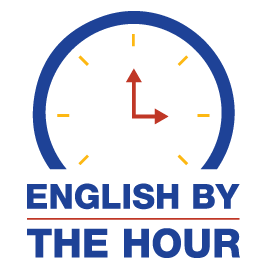Standards for Clarity & Speech in a World of Non-Native Speakers
I recently had a client in an internet session say to me: “I don’t work with any native speakers of English at all, so it doesn’t matter if I speak with a native accent. I just want to sound clear.”
I frequently get this comment about sounding clear regardless of accent, so I know this is top of mind for people. I don’t typically get clients who speak in front of only non-native speaking audiences, so this comment was a bit extreme, but it’s certainly a relevant trend.
The question for me was: What does “clear” speech sound like if not based in the American Accent when you are referring to speaking in the US and Canada?
Speech is in the “ear of the beholder.” There really isn’t such a thing as “clear” or “unclear” speech in and of itself, although one could argue that mouth movement, posture, and breath make people sound clearer in some environments. There are certainly accents where mouth movement varies and speed of speech varies and breath patterns vary. What’s clear to one person may not be clear to another.
However, we have to start somewhere, so rather than starting with a “standard American Accent”, which is a common way to approach the topic, I ponder starting instead with suggestions that tend to make anyone clearer or easier to understand in any language.
When I first became very attracted to this concept was a few years back, when an Indian colleague called me to talk about the “neutral” accent used in call centers in India. He told me when they “design” the programs for teaching sounds and patterns to the participants, they actually spend some time thinking about which sounds they want to incorporate from which accents. For example, the American dark /l/ and /k/ sounds are not selected! In other cases, American sounds may be selected (like the mid-length /ae/ in “cat” for example), primarily because American callers complain more than British Commonwealth callers do about not being able to understand the call center employee. So, although the sounds aren’t exactly “preferred”, it may be worth teaching American sounds to keep the complaint volume down, presumably because Americans have less exposure to different accents and more trouble understanding them.
Here are some suggestions for Clarity Speech Standards for Non-Native Speakers:
In general, it’s a good idea to:
- Speak with an Open Mouth: teeth parted, not squeezing or even touching, all the way back to the molars.
- Exaggerate stressed vowel sounds like “cAt or “AAAApple”.
- Elongate stressed syllables like “deVELopment” or “sugGEStion”.
- Talk louder rather than softer.
- Slow pace with breath instead of “trying to talk slow”.
- Pause strategically and breath intentionally.
- Focus on the audience’s needs rather than yourself to feel more confident.
- Avoid words that you know are incomprehensible to others.
- Video record yourself and know how you look and sound to others … even if you don’t change it.
- Be aware and accept yourself. You may want to change, but awareness and acceptance is the first step.
- Gain control of how you speech so you can change what you want to change.



